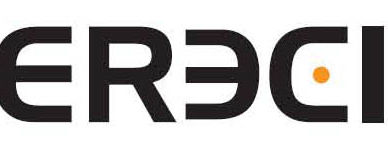Comparison of wild and farmed cod muscle characteristics
The aim of the project was to make a comparison of the properties of cod products made from wild cod before and after dead-freezing and farmed cod before dead-freezing. Also experiment with storage in sludge, ice spray on brine and supercooling (-2.4 ° C) on farmed fish to investigate how the properties of the flesh change with different treatment. Mortality stiffness had a significant effect on weight gain and salt uptake during injection and storage. The uptake of pre-rigor samples was rather low while the uptake of post-rigor wild cod was significant. The pre-rigor fish had less than 5% uptake after pickling, while the wild post-rigor had almost 9% uptake. A similar pattern was seen after injection, where the longest uptake was obtained in wild post-rigor fish or 16.5%. The salinity of most samples ranged from 0.3-0.4%. No significant difference was observed between unsalted samples. In the saline-salted groups, there was only salt uptake in wild cod that was injected after death. On the other hand, salt intake in fish injected before death was insignificant and applied to both wild and farmed cod. The water content was higher in wild cod compared to farmed cod and also spray salting led to a higher water content. Measurements from NMR measurements indicated that there was a difference in the mobility of water molecules and the possible location of water, but this can affect the water - holding properties of the muscle. The fish fillets generally performed well in traditional quality assessments, whether they were injected fillets or untreated fillets. Discharges did not increase as much during the storage period as expected, although considerable discharges were made into the pre- and wild post on the thirteenth day of storage. In previous experiments, the color of farmed fish products has been very white, despite the fact that they have become unusable. On the other hand, yellow cod products turn yellow with shelf life. The results of this experiment did not confirm this difference between farmed cod and wild cod.
There was a great difference in the sensory properties of farmed cod and wild cod after boiling, primarily in texture where wild groups were much thicker, more mushy and softer. Breeding groups had a meaty mouth effect, were more gummy and stuttering, in addition to having a sweeter taste and a much more meaty taste and smell. Storage temperature generally had the effect of producing earlier symptoms of damage in products stored at + 1 ° C compared to -2.4 ° C. The shelf life of farmed cod stored at -2.4 ° C was at least 5 days longer than that of a comparable group stored at + 1 ° C. The effect of storage temperature was also observed in the number of microorganisms, which together with the injection salting led to a larger number of microorganisms. However, there was little difference in products in terms of whether processing took place before or after death solidification. The research was part of the project "Processing and quality control of farmed cod, more specifically a summary for work components 2 and 4.
Production of farmed cod is increasing rapidly, but quality appraisals show that farmed cod has different characteristic from wild cod. These different characteristics make traditional production methods not suitable for farmed cod and therefore it is necessary to analyze those characteristics and adjust production methods especially for farmed cod. Matis ohf has been involved in farmed cod research from its foundation and the company built its foundation on the work which was done by its predecessors. The aim of this project was to look at these different characteristics between farmed and wild cod, pre and post rigor. The aim was also to do experiments with injection of brine and superchilling (-2.4 ° C) and detect the impact of different methods. NMR was used to analyze difference in longitudinal relaxation time (T1), between the samples, farmed cod had lower values for T1 than wild one. Therefore the mobility of water indicates difference in structure between the samples. High levels of glycogen are usually found in farmed cod which results in sharp fall of pH after slaughter. This low pH affects texture, because of collagen degradation which results in gap formation. The low pH also affects water holding capacity of the farmed cod. Measurements have shown higher pH in wild cod and this difference continues through low temperature storage. Texture measurements after 2 days storage indicates that farmed cod is lower in firmness than wild one, regardless of whether the fish is filleted pre- or post rigor. Sensory panels have also detected difference between wild and farmed cod. Wild cod is more tender and mushier, while the farmed one has more meaty texture, is more rubbery and has a clammy texture. Also the farmed fish has sweeter taste and more meaty taste and smell. Farmed cod is different from wild cod in many aspects. Therefore it is necessary to know those aspects and adjust processes especially for production of consumer goods from farmed cod.
Report closed until December 2011 / Report closed until December 2011






